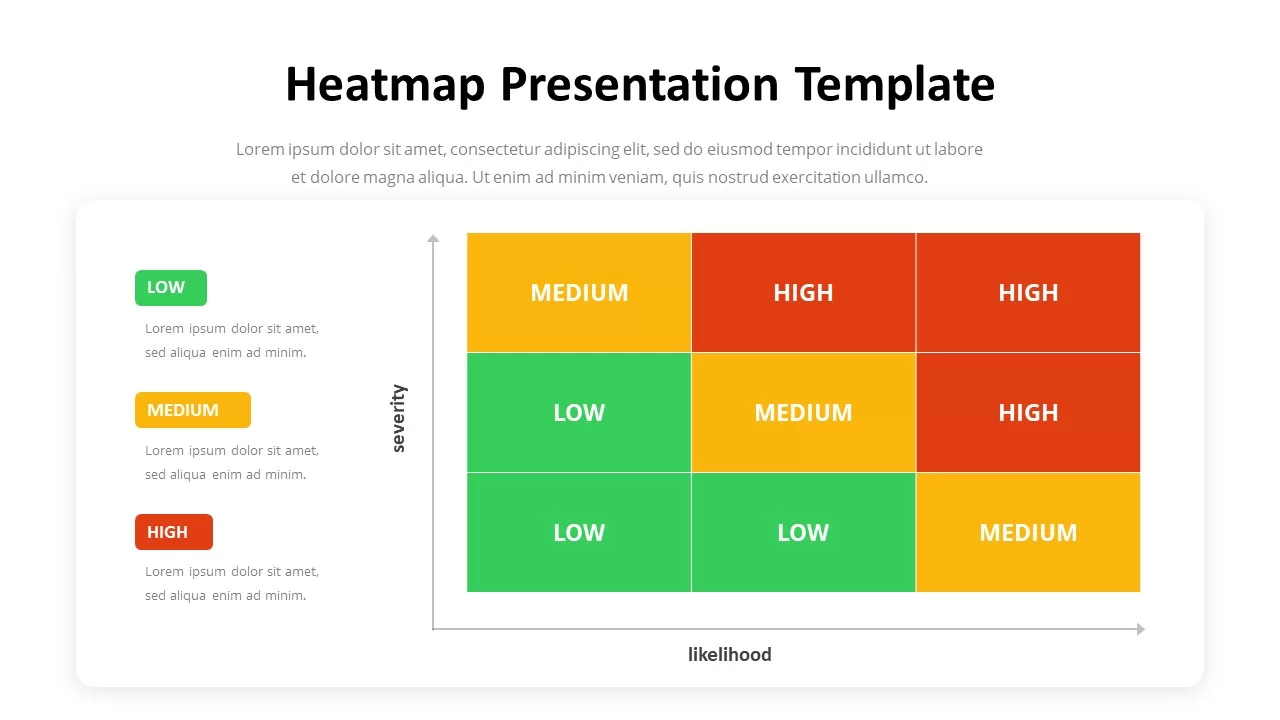Heatmap Template

Description
Quickly assess and communicate risk levels with this Risk Likelihood vs. Severity Heatmap Matrix slide template for PowerPoint & Google Slides. The core design features a three-row by four-column grid where likelihood increases along the horizontal axis and severity along the vertical axis. Each cell is color-coded—green for Low, yellow for Medium, and red for High—and labeled accordingly. A crisp axis in light gray with arrows frames the matrix, while thin borders define each cell for optimal readability. On the left, three text panels match the color legend for Low, Medium, and High, each with a title badge and descriptive text area to explain your risk criteria or mitigation strategies.
Master slide integration and vector-based shapes ensure seamless customization: adjust the grid size, recolor cells, swap labels, and update descriptions without disturbing alignment or formatting. Use built-in alignment guides to maintain perfect spacing across standard and widescreen layouts. Whether you’re presenting project risk registers, compliance assessments, or strategic vulnerability analyses, this template streamlines your workflow by preserving consistent styling across your deck.
Optimized for both in-person boardrooms and virtual webinars, the slide’s scalable vector graphics render crisply on high-resolution screens and printed handouts. Export the matrix as a standalone graphic for reports or embed it in larger presentations alongside dashboards and action plans. With its intuitive layout and professional aesthetic, this heatmap matrix empowers stakeholders to grasp complex risk landscapes at a glance and drive informed decision-making.
Who is it for
Risk managers, project directors, compliance officers, and business analysts who need a clear, color-coded matrix to evaluate and prioritize risks by likelihood and severity for executives, teams, or clients.
Other Uses
Repurpose this matrix to visualize customer satisfaction vs. effort scores, priority vs. impact analyses, resource allocation frameworks, or any scenario that benefits from a two-axis, color-coded comparison chart.
Login to download this file

















































